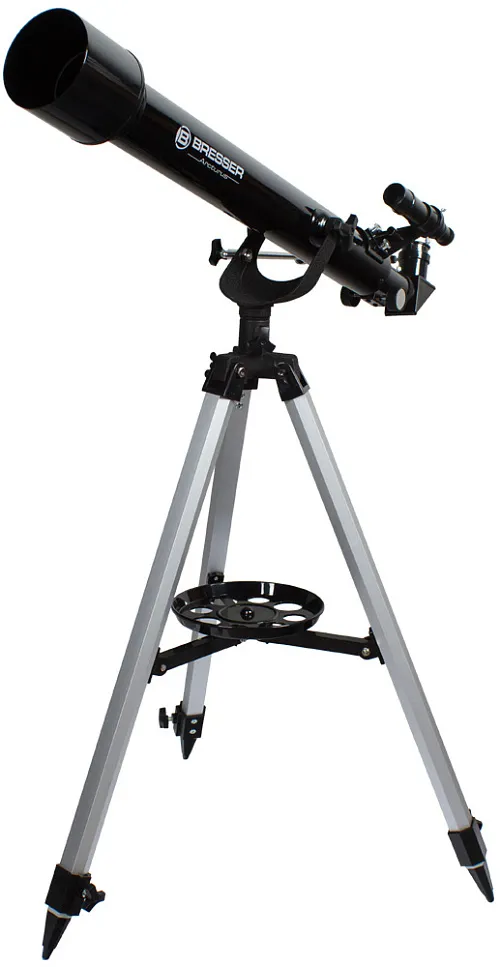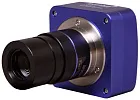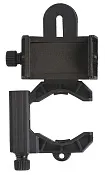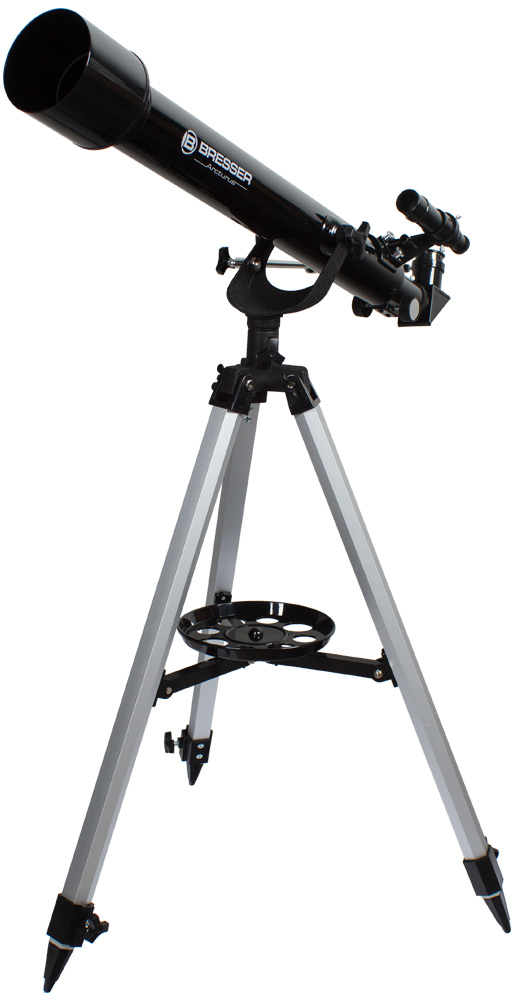Bresser Arcturus 60x700 Telescope
Achromatic refractor. Objective lens diameter: 60mm. Focal length: 700mm
| Product ID | 17803 |
| Brand | Bresser GmbH, Germany |
| Warranty | 2 years |
| EAN | 4007922142944 |
| Package size (LxWxH) | 35x75x14 cm |
| Shipping Weight | 5.3 kg |
Small Bresser Arcturus 60/700 achromatic refractor is perfect for a beginner as it is easy to use, no prior experience needed. In addition, it is installed on a simple Alt-Azimuth mount that does not require any adjustment before observations, and is equipped with a micrometer-screw on the vertical axis for more convenient tracking. This telescope will let observers see lunar craters and Jupiter’s satellites, Saturn’s rings, and many other interesting objects. A special erecting lens giving a direct image of observed objects allows you to use this telescope as a powerful spotting scope for terrestrial observations.
The telescope features f/11.7 focal ratio and high-quality coated glass that ensures great color rendering properties and reduces the effect of chromatic aberrations.
The device is equipped with a focuser that has a standard barrel diameter of 1.25", which allows installing accessories of other manufacturers. The basic kit provides magnification in the 35–262x range.
The telescope comes with a practical, hard carry case. You can use the case for storing the microscope and all accessories and keeping it dust-free, and for transporting your instrument without risk of mechanical damage. It has small dimensions, so you will be able to get to your observing spot using public transportation.
Features:
- Achromatic refractor
- Multi-coated optics
- Moon map and compass
- Simple alt-azimuth mount
- 1.25" eyepiece
- Suitable for both terrestrial and astronomical observations
- Case for storing and transportation
- 5-year manufacturer's warranty
The kit includes:
- User manual
- Finderscope
- Optical tube
- Tripod
- Mounting bracket for finderscope
- Manufacturer warranty
- Diagonal mirror
- 1.5x erecting eyepiece
- Compass
- Moon map
- Eyepieces: H-20mm (1.25"); H-12.5mm (1.25"); SR-4mm (1.25")
- Case
| Product ID | 17803 |
| Brand | Bresser GmbH, Germany |
| Warranty | 2 years |
| EAN | 4007922142944 |
| Package size (LxWxH) | 35x75x14 cm |
| Shipping Weight | 5.3 kg |
| Optical design | refractor |
| Optical scheme | achromat |
| Objective lens diameter (aperture), mm | 60 |
| Focal length, mm | 700 |
| Highest practical power, x | 120 |
| Magnification, x | 35 — 262 |
| Aperture ratio | f/11.7 |
| Resolution threshold, arcseconds | 2.2 |
| Focusing | by moving an eyepiece |
| Eyepieces | H4mm, H12, 5mm, H20mm |
| Eyepiece barrel diameter, in | 1.25 |
| Finderscope | optical, 5x24 |
| Telescope control | manual |
| Mount | alt-azimuth |
| Optical tube weight, kg | 2.05 |
| User level | elementary, beginners |
| Observed object | planets of the Solar System, terrestrial objects |
| Pouch/case/bag in set | case |
Convenient diagrams that describe how to install additional accessories on refractors and catadioptric telescopes
Find out how to assemble a telescope on an example of the Levenhuk Skyline 90x900 EQ telescope
This short guide will help you avoid typical mistakes and learn more about telescope and mounting types
The basics of astronomical observations for beginners
A useful video review on a wonderful entry-level refractor for beginner astronomers. This telescope is easy to assemble and use. The magnification power varies between 35x and 262x. You will be able to observe the Moon’s craters, Saturn’s rings, and many celestial objects
In this article we have gathered answers to some of the most frequently asked questions about telescopes
How telescopes work?
You can actually perform observations from your balcony!
All about telescope sizes, types, magnification, and mounts
Learn how to set up and use the telescope properly
Astronomy in light-polluted skies. Find out what you can observe in the city
Read an interesting comprehensive article on telescopes for little astronomers
Celestial objects you can observe with telescopes of different apertures
Colored and vivid images of galaxies, planets and star clusters entrance everyone who is fascinated by boundless space
Find an interesting review on the history of the changes to a refracting telescope
To make the process of choosing a telescope easier, we will tell you about the characteristics of the most popular types of telescopes today
Learn everything you need to know about refractor telescopes to make the right choice






